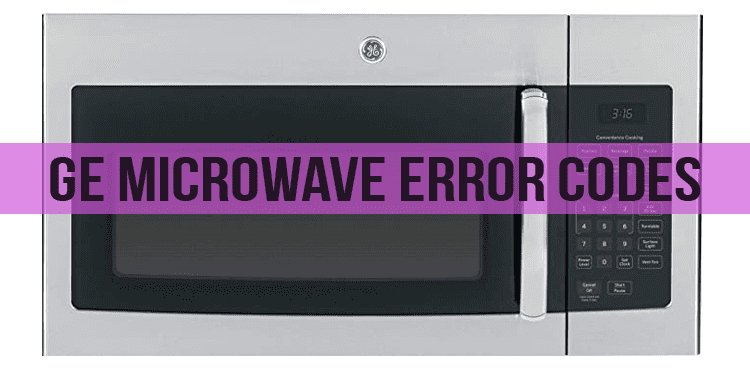
Let’s break this down a bit. An error code is like the microwave’s way of letting you know that something’s off, similar to how your car’s dashboard might light up when something needs attention. The LE error code often relates to a problem with the door latch. Imagine trying to lock a door and the latch just won’t catch – that’s somewhat akin to what’s happening inside your microwave when this error pops up. But now, you might be wondering, does this mean you have to spring for repairs, or will GE’s warranty take care of it for you?
Understanding GE Microwave Warranties
When you purchase a GE microwave, like most major electronic appliances, it comes with a warranty. A warranty is like a safety net, protecting you from paying out of pocket for certain types of repairs within a specified period. Typically, GE offers a one-year warranty on their microwaves, covering both parts and labor for any manufacturing defects. But here’s the catch: not everything might be covered.
You see, the warranty mainly covers issues that arise from defects in materials or craftsmanship — basically, things that were wrong with the microwave when it left the factory. If your error code LE is due to a manufacturing defect, the warranty likely covers it. On the other hand, if the code results from misuse or natural wear and tear, it might be a different story. Think of it as a sort of insurance policy for your microwave; not every situation falls under its coverage.
So, how do you know if your LE error is covered? Start by checking your warranty documentation. This will give you a clear picture of what’s included. If your warranty is still active, it might be worth reaching out to GE customer support. They can provide guidance on whether your specific issue falls under their service agreement. This approach saves not only money but also the hassle of figuring things out all by yourself.
Common Causes of Error Code LE
Now that we’ve touched on warranty coverage, let’s dive into what might cause that pesky LE error code. As mentioned earlier, this code often relates to issues with the door latch mechanism. This part of the microwave is quite like your front door lock. If the lock doesn’t latch, the door won’t stay shut. Similarly, if the microwave’s door latch isn’t functioning properly, the appliance doesn’t operate safely.
A common reason for this error could be debris or food particles lodged in the latch area. Imagine trying to lock a door that has dirt stuck in the keyhole – it just doesn’t work smoothly. Cleaning the latch area with a soft, damp cloth might clear up the issue. Always remember to disconnect your microwave from the power source before doing any cleaning or maintenance!
Another possibility is a faulty door switch. Just like how a light won’t turn on if the switch isn’t working, your microwave might not start if the door switch is broken. In these cases, a more thorough inspection or professional repair might be necessary. If you’re handy with small repairs, you could inspect this yourself, but if in doubt, calling a professional is always a smart move.
Steps to Take When Encountering the LE Error
So, you’ve spotted the dreaded LE error. What should you do next? First things first, check if the microwave’s warranty is still valid. If it is, and the problem is a defect, GE might cover the repair costs. When speaking with customer service, have your microwave’s model number and purchase date handy — they’ll definitely ask for these details.
If it’s a simple fix, such as cleaning the latch, give it a shot yourself. Remember, safety first, so make sure your microwave is unplugged before you start tinkering. If you’re not comfortable with a hands-on approach, you can always call in a professional. Sometimes, hiring someone ensures the job is done right the first time, preventing further issues down the line.
But what if the warranty doesn’t cover the fix? Don’t worry; all is not lost. There are often repair services that specialize in appliances and offer reasonably priced solutions. It’s worth comparing costs, as sometimes repairs can be more economical than replacing the microwave altogether.
Preventative Tips to Avoid Future Errors
Let’s talk about preventing these headaches in the future. Like any appliance, a little TLC can go a long way in keeping your microwave running smoothly. Start by regularly cleaning the door latch area. This simple act can prevent debris from accumulating and causing errors.
Also, avoid slamming the microwave door. Treat it with care, just like you would a delicate instrument. Gentle handling ensures the latch mechanism stays in good condition. Another tip is to keep an eye on the microwave’s performance. If it starts behaving oddly, address issues early before they morph into bigger problems.
In conclusion, while an error code LE on your GE microwave can be frustrating, understanding your warranty and taking preventive measures can help. Whether you tackle the problem yourself or with professional help, knowing how to approach these issues makes all the difference. After all, having a reliable microwave means fewer cold meals and more time to enjoy life!